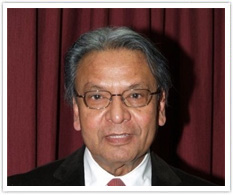
Integration and Response Measurement -- Are We Doing This Right?
Although testing and tracking each dollar in an integrated campaign may prove more difficult than the days of single-channel fundraising, giving up specific-channel attribution is a necessary evil in multi-channel endeavors. CDR Fundraising Group President and CEO, Geoff Peters, recently spoke to this issue in Fundraising Success, providing some guidance for the optimal approach to testing and measuring results through direct response.
Fundraising Success, providing some guidance for the optimal approach to testing and measuring results through direct response.
Because nonprofit organizations are watching their expenditures more closely each year, “every activity is measured for its productivity, either on behalf of the mission of the organization or its fundraising. So, direct-response fundraisers are being asked to measure more carefully in an increasingly complex environment.”
100% accuracy in tracking the specific motivation of donation dollars may no longer be possible; however, through data integration, careful testing and results analysis, your organization can maximize ROI and optimize fundraising efforts. Geoff outlines several approaches that parallel the three pillars of integrated marketing established by the IMAB – The Donor, The Organization and The Practice.
To truly understand your donors’ experiences, you must organize and house your data in a central location. You should be aware of, control and track each communication your donors receive and utilize response method data, regardless of channel to direct your strategy. Geoff suggests, “develop precise solicitation and donor coding and transaction measures for each single channel, and maintain those data in your integrated database.” In order to integrate your data, organizational change may be in order to share information and formulate strategies across departments or chapters.
Upon organizing your data, you can create and run effective tests and measure the results to determine campaign-specific boosts or drops in response. “When you are interpreting multichannel test results, you will have more “noise in the system” or random and unattributed transactions than you would normally have in a single-channel test.” But ultimately, your fundraising program will improve through smarter targeting, an improved donor experience and multi-channel reinforcement of your organization’s mission and message.
Share, Like and Post | | Article Link | CommentMore Integrated Marketing Lessons from Amnesty Denmark
One thing that struck me about my recent talk with Amnesty International Denmark’s Global Fundraising Advisor, Christoffer Holm, was his emphasis on one simple piece of advice -- don’t ignore your non-financial supporters.
I’ve continued thinking about how their success could help other charity programs across the sector. We don’t all have activism as part of our mandate, but with the emergence of so many new channels (social media in particular) almost all charities have some non-financial supporters just waiting to be converted into committed donors.
so many new channels (social media in particular) almost all charities have some non-financial supporters just waiting to be converted into committed donors.
Amnesty Denmark made this work for them by tracking non-financial involvement like communicative and action-based transactions in the same way they track donations -- participation in events, subscribing for newsletters, volunteering, Facebook likes and shares, re-tweets through Twitter, etc. All of these are meaningful ways to add an extra dimension to your data, and can help determine which prospects are most interested in your cause.
By tracking these details, we begin to see a more integrated picture of who to approach for donations –- first time gifts as well as upgrades. We can actually map out our warm leads, which means we can better direct our asks. And this is something I think we can all benefit from.
So should we start changing the way we collect and manage our data? It’s worth some thought. Amnesty Denmark has proven that there can be real value gained from paying more attention to non-financial supporters. And perhaps your charity can find success from that, too.
Share, Like and Post | | Article Link | CommentQ&A: Integrated Marketing with Ronald Forbes, Former CEO of JDRF Canada
Ronald Forbes is the former President & CEO of the Juvenile Diabetes Research Foundation Canada. His leadership at JDRF resulted in a fourfold increase in revenues, higher profile in the industry and recognition by the Federal Government at the highest levels. After working at JDRF for 8 years, Ron took retirement in 2006. He keeps busy with community service, charitable works and part time consulting, and is currently busy exploring opportunities in the Social Impact Investment scene.
higher profile in the industry and recognition by the Federal Government at the highest levels. After working at JDRF for 8 years, Ron took retirement in 2006. He keeps busy with community service, charitable works and part time consulting, and is currently busy exploring opportunities in the Social Impact Investment scene.
Recently, Mike Johnston from hjc sat down with Ron to learn more about JDRF Canada's integrated approach to marketing and fundraising. This Q&A first appeared in hjc's eNews newsletter.
MIKE: Ron, I remember working with you at Juvenile Diabetes Research Foundation of Canada back in 2001 when you were developing strategies for increasing your fundraising and marketing initiatives. Your vision was to achieve this using an integrated approach. You’ve told me that this evolved over a few years and in 2004 you introduced the concept of Integrated Fundraising at JDRF. Why and how did that happen?
RON: As CEO for JDRF Canada, I recognized the need to accelerate the fundraising to keep pace with the greater demands for research dollars to bring the organization closer to achieving its mission. We needed a paradigm shift away from the $12 million plus that was being raised annually and this was not possible using traditional methods.
MIKE: And you thought that a more integrated approach would raise more money, motivate more people to support you?
RON: Yes, that was my vision and I felt that it was possible with proper planning and execution. I knew that we had to overcome a more traditional culture to fundraising and marketing. We had what I like to call a "product focused" culture built around marketing products. For example, there was a team built around a walk (a product) while there was another team built around galas (a product), etc. And each of these products was led by someone who had their own, separate database and “customers” on excel spreadsheets. Each geographic region had a separate database as well.
MIKE: I like that term, "a product focused culture." I can sure relate to that.
RON: If we were going to make a breakthrough in fundraising and marketing, then we needed to break down this product silo reality and integrate. And by integration I mean a very simple definition: a complete view of a constituent’s interaction with us. And to help us get that holistic view, we needed a few things to fall in place.
On a tactical level, we needed the technology necessary to capture all of the interactions of an individual (e.g., someone who might walk, attend an event, volunteer or make a major gift) in one central database and then have easy access to that information to better tailor a more profitable relationship for both us and the supporter.
MIKE: Today, we call that a complete CRM approach.
RON: Back then I simply called it our integrated approach.
MIKE: How else did you frame integration?
RON: Big picture I drew three bubbles to explain the concept of integration to staff: individuals, businesses, and community. I explained how an individual was interconnected and fused in to these three categories so separating them in to silos would not work efficiently and that integration was the answer. Technology was one of the tools for achieving this and the first step was an integrated donor management system or database.
MIKE: And what about the web in those early days?
RON: I remember hjc helping us getting a better online presence and I saw online as another key channel that would connect our "products" to one another and to our customers even then.
MIKE: So, you have a high level definition of integration and you saw technology as a key to help the customer relationship management experience. But how did you make it happen?
RON: We needed to have a goal to pursue and I wanted to make a significant impact on the funds raised. I committed to raise $100 million over 5 years. That was a roughly 100% increase in income. Some people were a bit skeptical but I thought that if we made an integrated plan, and stuck with it, we’d see the difference and hit our goal.
MIKE: Did you make your goal?
RON: JDRF exceeded the goal of $100 million over 5 years. Close to a 100% increase. I believe integration made the true difference. But it was also about the people behind the work. First, we made a strategic plan, and then detailed a tactical integrated plan showing the tactics to be adopted each of the 5 years. It took about 5 months to create and tweak it. We then created the oversight to ensure that it worked. We had specific Head office and Regional staff who were tasked to monitor the different areas of the integrated plan. You stick with a plan to be successful but you also may need to adjust along the way, and only through monitoring can you properly adjust.
MIKE: What were some of the biggest hurdles?
RON: People and a traditional mind-set! We had a lot of great people but when we looked at the integrated tactical plan we realized that we needed to shift people around and do some reorganization to ensure we could execute properly. It’s something that is critical in any integrated strategic plan. Without the right people to execute the plan you will be doomed to failure.
MIKE: Any other hurdles?
RON: Getting everyone on the same page. With a common, traditional culture of product silos, I needed to get product leaders and the Regional leaders to understand the plan, buy in and be prepared to make changes, some significant, in staff and in industry traditions. This was achieved by getting them together in a room and getting them comfortable with sharing resources, and helping one another to do even more in their product and geographic areas. It was about showing everyone how an integrated approach will make the overall pie bigger and get us closer to achieving our mission and that was the most important thing.
MIKE: Any final words?
RON: I think that that first year of a multi-year plan is the toughest. You have to stick with the plan, make adjustments, get the right people in the right place and monitor carefully. The fundraising and marketing efforts and improvements accelerate from year to year. The first and second years, not as much as years 3, 4 and 5. Believe in it and stick with it. – A GOOD PLAN WITH THE RIGHT PEOPLE TO EXECUTE IT.
You Don't Have to Be Perfect for the Integrated Marketing Awards
To say you’re integrated can be like stating you’re perfect. Integration is such a buzz word today. Not striving to be more integrated seems misguided, while claiming to be truly integrated seems to lack a sense of humility. However, many successful integrated campaigns are being pioneered today, and there are some excellent candidates out there for the new Integrated Marketing Awards.
The Integrated Marketing Advisory Board (IMAB) announced recently that it will be recognizing integrated campaigns at the Bridge Conference in August. While it is hard for me to think of the perfectly integrated campaign, it’s not difficult to come up with many examples of campaigns that are “more” integrated or had integrated outcomes. The IMAB feels it is important to share and showcase such examples, as they’re invaluable to help the nonprofits and the industry grow beyond our traditional marketing activities.
Traditional marketing activities hold value by themselves; however, as our culture becomes more fragmented with increased distractions, changing donor preferences require organizations to offer giving channels that are also accessible and convenient. The mix of marketing messages necessary to gain donor attention, and the additional options for giving, require integrated fundraising. Examples of integrated campaign innovations, successes or failures, are invaluable.
Please consider sharing and submitting your nominations for an integrated campaign that we all can learn from, and shed some light on answering questions many of us have, such as:
- How do we quantify whether marketing efforts are working together?
- What are the proper metrics and results?
- How do we know if we’ve created, engaged, developed and maintained at an optimal level?
These awards will recognize results in each of three pillars of integrated marketing:
- The Donor – Show us how the integrated marketing campaign or program had an impact on donor satisfaction and the donor experience.
- The Organization – Describe how an effort across the organization – that demonstrates alignment of strategy, structure, culture or skills – had an impact on ability to integrate marketing efforts.
- The Practice – Share a real world case study that highlights best practices in the field of integrated marketing.
Any person may nominate an unlimited number of nonprofit organizations in each award category. So, consider which organizations you would like to nominate, and be sure to submit your nomination by June 30.
Share, Like and Post | | Article Link | CommentAmnesty Denmark Shares a New Kind of ROI: Return on Involvement
I recently had the pleasure of hearing the success Amnesty Denmark has had since implementing a more integrated strategy to their fundraising program. I spoke with their Global Fundraising Innovations Advisor, Christoffer Holm, to learn why they’ve started measuring their Return on Involvement.
To many charities, integration is about ensuring different channels work together seamlessly -- online, mail, telephone, face-to-face, mobile, etc. But the nature of Amnesty Denmark’s work means that integration must go beyond fundraising. As an activist organization, their supporters’ non-financial involvement is just as important. They rely on petitions and letter writing campaigns to make social change and put pressure on governments. But their activism and fundraising departments had been working as just that -- two separate departments.
“The first big hurdle was convincing myself that we could ask supporters for things other than financial help without cannibalizing our fundraising.”
Christoffer’s words echo a common sentiment in our field. Many charity staff members express fear when it comes to making asks that involve more than money. We assume that if given a choice, people will almost always select only the "free" option, as if we’re giving them an "out".
But like many fundraising practices, our intuition is often the opposite of what the actual results show to be true. And Amnesty Denmark is a perfect example. The more they involved supporters across channels-- fundraising, communications, activism, and campaigning -- the higher their overall returns in all departments.
Donors want to be involved with the causes they care about. They don’t want to feel like ATMs. So let them show their passion by giving them a chance to be a part of your team. You’ll be rewarded with better retention from more committed donors, and most likely a higher lifetime value in the long run.
There are numerous charities like Amnesty Denmark whose mission involves spreading awareness and influencing social change too. Measuring the Return on Involvement could very well become an important tool for the future of fundraising. And as we continue to struggle with the declining power of cold acquisition, we can also look to our engaged, non-financial supporters as the warm leads in the new integrated fundraising world.
Share, Like and Post | | Article Link | Comment

















